The CGIAR Research Program on Water, Land and Ecosystems (WLE) is built on the basic premise that agricultural intensification and productivity increases can be accomplished in ways that are sustainable and that make use of the services provided by ecosystems.
Although this is our goal we recognize that it is easier said than done and there are also trade-offs that need to be addressed. Since the Green Revolution, agricultural productivity has improved enormously and global hunger has been halved in the past 25 years. Yet, with these improvements in productivity there have also been significant environmental costs. Agriculture is now well recognized to be a primary driver of global change and is the single largest contributor to the rising environmental risks of the Anthropocene.
See related post by former WLE Program Director Andrew Noble

With a projected increase in global population to 9 billion by 2050, many questions need to be answered to understand how to meet the rising demands for food within the current constraints on available resources in agriculture. One major suggestion on the table is sustainable intensification – a concept that calls for a paradigm shift in the way we conduct agriculture. Sustainable intensification calls for a more holistic approach to agriculture that focuses on mitigating environmental degradation while increasing yields. Whether this is actually possible is up for debate.
You be the judge. Is sustainable intensification the only viable way to address a shrinking resource base while meeting human needs on a global scale?
This question will be posed as a debate by WLE at Stockholm World Water Week this year. Join in on the discussion in the comments below or send a response to j.furtado(at)cgiar.org



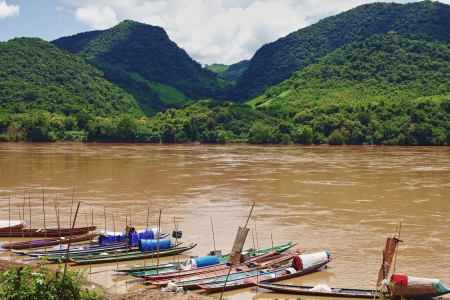
















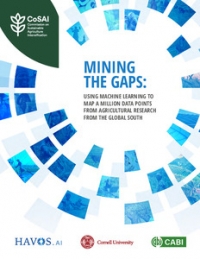
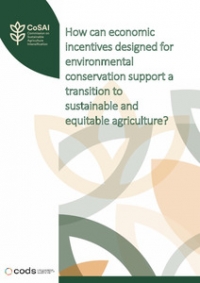
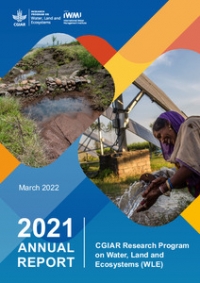
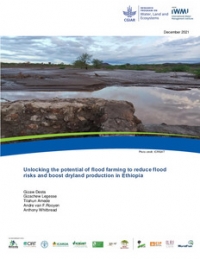
Comments
At the moment the term SI is more of a buzzword than anything concrete.
My questions around SI are this:
1) Who defines what is sustainable? Are we talking about sustainable from an economic or from a Bruntland perspective. Are we talking about a bit more sustainable than full-bore extractive agriculture as defined by the sellers of inputs to farmers locked into those systems, or are we talking about systems that focus on closed loop farming systems with focus on nitrogen, phosphorus, soil, water and waste loops? My point here is that sustainability often depends on who defines it. While WLE sounds good in principle, does it speak to these closed loops, planetary boundaries or is sustainable just about producing enough food for people?
2) Similarly how do we define intensification? While I agree in principle that we have to use land and resources more intensively as population grows, just how does that intensification work? Do we take agriculture into shade tunnels, covered by plastic and reliant on external inputs or do we intensify traditional systems by intercropping, closing loops and making the whole production cycle more sustainble.
So what we have is a semantic dance around the terminology of SI that needs to have a consistent and measurable set of parameters to define outcomes. Not just for the sake of measuring and being science based but so that the system can meet the requirements of the people who rely on the resouces where SI is being practiced - so that there is a feed up and feed down into managing the system.
If SI is to be broadly accepted it needs to ensure that there are standards that cannot be opportunistically abused - perhaps similar to organic standards. For instance so much water must produce so much crop weight or nutrient value. Same for nutrient input and output. Systems must be able to manage, accept and recycle all waste. Feedback and improvement loops must be integral parts of these systems.
I am sure that all of these issues have been hacked over at length but I worry about the adoption of buzzterms that are well intentioned and then simply hijacked by the very institutions that are responsible for many of the problems facing agricultural production in the first place. So SI, like any improvement in agricultural production must be managed with integrity in order to ensure long term reputational integrity. This requires transparent standard setting, monitoring, evaluation and oversight.
I think that apart from being the "slogan of the moment", SI in practice, is us providing farmers with the set of tools - information and skills for them to improve their systems managemnt through a better allocation of the resources they have at their disposal and those they can mobilize. For this to happen, personalized agricultural extension is critical because there is no generalized solution that will solve all farmers problems at once. SI, like CA and other technologies (Slogans) that have been promoted to date are knowledge intensive and have been implemented through a supply driven approach with less consideration to farmers circumstances. Therefore, despite beautfull in paper, implementation rates in the field are low. There is therefore a need to rethink how we want to do this and in my hamble point of view, it has to be done in an interactive and adptaive way in the field talking to farmers far from the field where all plot managemnt decisions are made.
I believe that sustainability is both a dream and a reality; it can be achieved if there is a clear roadmap, otherwise it remains a fantasy. I am invited to give a public lecture on the roadmap to sustainable agricultural intensification (SAI) in the context of WLE and the SDGs on September 18 at the University for Development Studies (UDS), Ghana, to mark the signing off of the SDGs, which is planned for the next week (25-27 Sep. 2015). Some of the Pros for SAI include the need for mitigating social and ecological disasters attributed to a pure intensification of agriculture (the case of a typical Green Revolution, GR). Another reason is that businesses have learned how to incorporate the Triple Bottom Line (TBL) in their management systems in order to achieve economic, social and environmental sustainability. Thus, some farmers have learned to do so under facilitation of NGOs. That is why “the active involvement of non-governmental organizations (NGOs)” is acknowledged as having “helped to expand the agricultural R&D agenda on natural resources management (NRM) and sustainable agriculture, the problems of Less-Favoured Areas (LFAs) and poor farmers, and more participatory research approaches…” . Besides scientists, businesses and NGOs, the political world is still pushing on "solving global issues by global solutions". Hence, ‘Sustainable Agricultural Intensification” has become a major concern of global agendas such the UNCED and Agenda 21, UNCSS, MDGs, SDGs, and several high level panel discussions. These global initiatives have shaped our mind toward sustainability by providing huge, wide and ambitious goals for tackling poverty, reducing inequality, combating climate change, and protecting ecosystems . They are ambitious but not mere childish fantasies. The MDGs and SDGs for instance provide a true roadmap for achieving sustainability. But as infinite as the time is, our battle for sustainability will never end; it will be a sustained effort toward ensuring adequate goods and services in a healthy environment and equitable society to the next generations.
World's agriculture is in a tipping point. Intelligent Agriculture and Aquaculture will change everything and nothing is going to be the same. Traditional farming will be a history soon. The farmer of tomorrow will sit in an office, at the computer, with joystick in-hand, instead of digging in the field's mud and dust under the burning sun.
We in Grainis Hydrogen Bulgaria work since 2005 on technologies for Aerial Seeding by Drones, shooting capsules with seeds and moist fertilizer, by airgun, which capsules explode, loosing the soil around and spread the seeds. Over 100,000 trees could be planted per day, automatically, by this incredible technology.
Robotized Drones, fueled by clean liquid MOH Gas could fly and work all day long without landing. Except aerial seeding, they could also pick and ship fruits and veggies, cut branches and leaves, pollinate, irrigate, fertilize, spray herbicides, exactly on each specific plant, as much as needed, thus saving up to 95% of water, fertilizer, chemicals.
Hydroponic Vertical Farms could be another tremendous hyper-intensive booster of the agriculture and aquaculture development, offering up to 12 crops per year of green foods, and double yields. Except green foods, these farms could produc also various aquaculture in floors.
Modular Farms will be easily assembled out of super-cheap and strong material - Basalt-Fiber Composite (BFC), stainless, fireproof, waterproof, 3 times stronger and 20 times cheaper than steel. Farms will have 10-15 floors, computer-controlled air temperature, humidity, 30% additional CO2-enrichment and feeding water-solution content, 24/7 LED Lighting, non-stop MOH Gas Power and Fuel generation out of water, plus heating and cooling.
MOH Gas Plants could produce non-stop power out of water in the middle of the deserts, for pumping water out of deep wells and irigating vast territories, turning sands and rocks into green gardens.
Desalinated seawater could be also pumped along hundreds of miles long pipelines, made of BFC.
https://desert.alle.bg
Add new comment